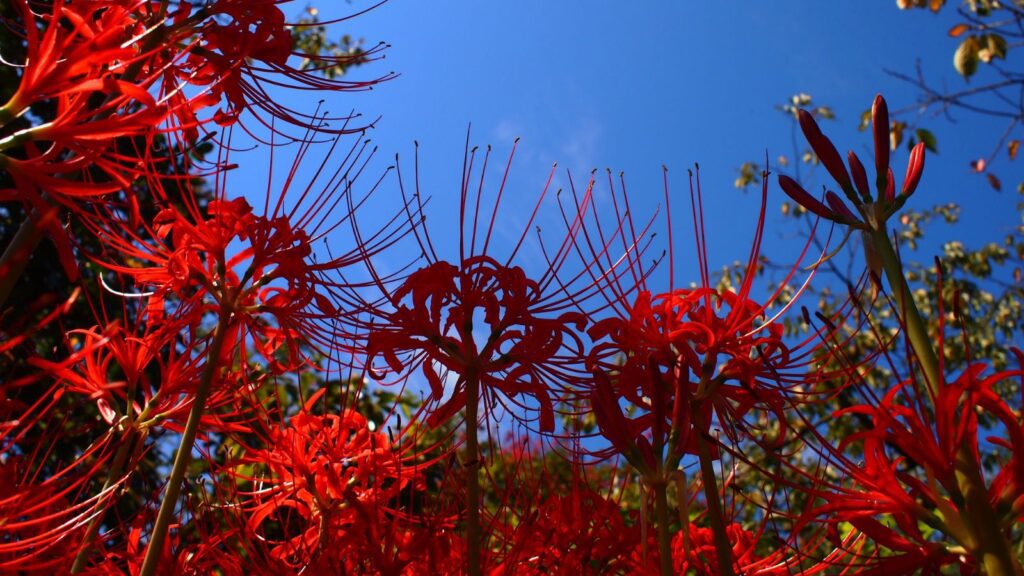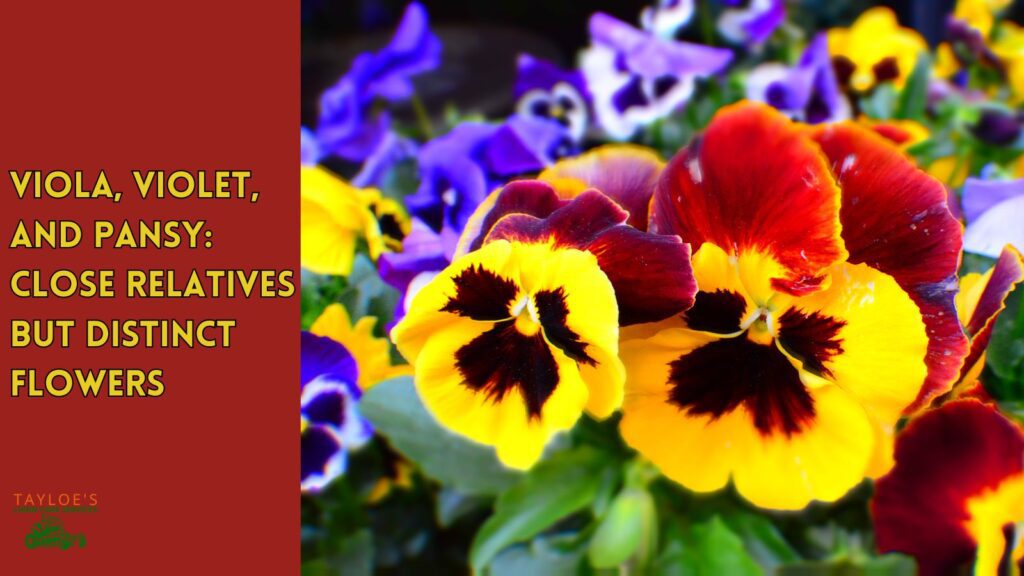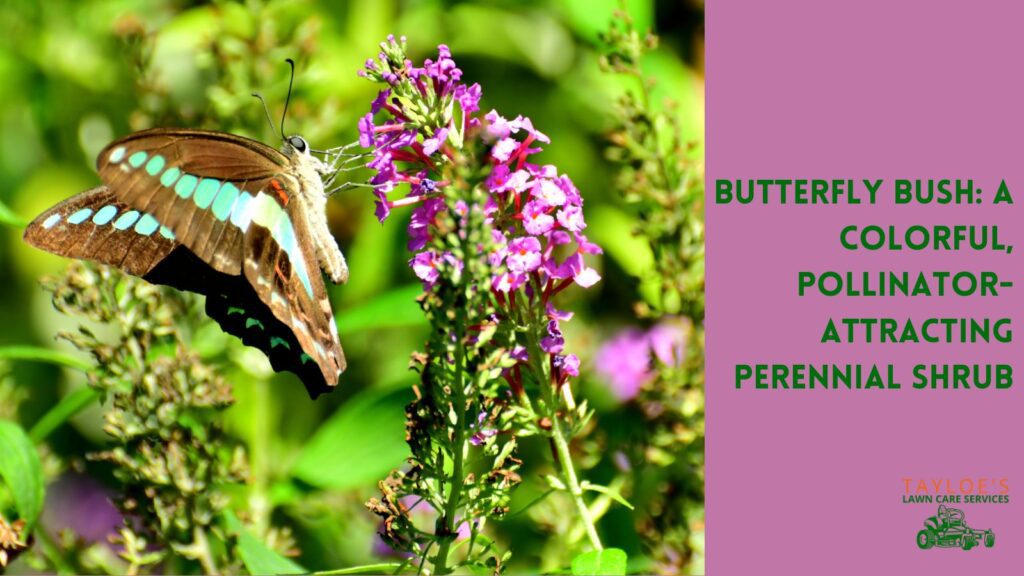Last Updated on: 20th October 2023, 07:17 pm
Want gorgeous red flowers in the late summer or early fall? Plant these.
In the diverse ecosystems of Northeastern North Carolina, specifically in the thriving environments of USDA zones 7B and 8a, the Red Spider Lily (Lycoris radiata) is a botanical beauty. Its unique, spidery-shaped flowers draw the attention of landscaping professionals and horticulture enthusiasts alike. Gardeners and landscapers value its striking appearance and resilient nature. Moreover, this unique flower holds significant potential for enhancing local landscapes and contributing to regional biodiversity.
This article will provide an insightful overview of the Red Spider Lily, offering expert advice and actionable knowledge for cultivating and appreciating this remarkable plant in our local context.
Historical Background of the Red Spider Lily

The Red Spider Lily, scientifically known as Lycoris radiata, originates in East Asia. Despite it’s common name, the bulb plant is not a lily. Instead, it is in the Amaryllis family.
It came predominantly from China, Korea, and Nepal. The flower’s journey from its native lands to different parts of the world is speaks to its adaptability and appeal. Brought to the United States in the 19th century, it quickly gained popularity for its unique aesthetic and hardy nature, finding a suitable habitat in the varied climates of the country, particularly in the Southeastern regions, including Northeastern North Carolina.
Over the centuries, the Red Spider Lily has been imbued with cultural and symbolic meanings in its native and adopted lands. In East Asian folklore and art, it is often associated with themes of memory, protection, and transition, representing the afterlife in some traditions. The flower’s rich cultural story adds an intriguing layer to its presence in gardens and landscapes. It offers both visual beauty and a depth of historical and symbolic meanings.
Traditional Uses in Landscape Design
In traditional and contemporary landscape design, the Red Spider Lily is valued for its ability to add vibrant color and texture to gardens. Its bold red hues and distinctive spider-like petals create focal points in garden compositions. Besides that, its seasonal late-summer blooming pattern offers a timely visual interest. Just as many summer flowers fade, these blooms develop and add a fresh splash of color!
Landscape designers and horticulturists have utilized the lovely red flower in various settings. It works almost everywhere, from border plantings to container gardens. Once you see it, you’ll appreciate its versatility and impact in enhancing the aesthetic appeal of outdoor spaces.

Planting and Caring for the Red Spider Lily
Tayloe’s Lawn Care Services clients fall within USDA zones 7B and 8a. Great news if you want to plant this lovely red flower!
Northeastern North Carolina presents a favorable environment for the Red Spider Lily. The region’s moderate temperatures, well-distributed rainfall, and varied soil types create conducive conditions for the plant to thrive. Understanding the microclimate of specific locations is essential for optimizing the growth and flowering of this unique species in local landscapes.
Besides our local area, the adaptable red spider lily grows well in USDA zones 5b to 10.
Lycoris radiata flowers thrive in full sun to partial shade, with at least four to six hours of direct sunlight daily. However, they can tolerate some shade and still bloom, especially in moderately hot to hot climates. Here in Bertie County, NC, the plant will appreciate a spot that gets full morning sunshine and a bit of cooling shade in the later part of the day.
Soil Preparation and Planting Guidelines
Red Spider Lilies (Lycoris radiata) prefer a slightly acidic to neutral soil pH range of approximately 6.0 to 7.0. Ensuring that the soil is within this pH range will contribute to the optimal growth and flowering of the plant. If your soil is outside this range, you may need to amend it to adjust the pH. Adding organic matter such as compost can help buffer the soil pH and improve the overall soil structure and fertility, which benefits the beautiful red flowering plant.

Plant the bulbs at a depth of 3 to 5 inches, spaced approximately 6 to 8 inches apart, during late summer to early fall. This timing allows the plant to establish its roots before the onset of winter, ensuring a robust bloom in the following season.
Watering, Fertilizing, and Care Requirements
While the Red Spider Lily is relatively low-maintenance, certain practices will enhance its growth and flowering. Regular watering is essential, particularly during dry spells, but care should be taken to avoid waterlogged conditions.
A balanced fertilizer applied in early spring can promote healthy foliage and vibrant blooms. Moreover, practicing good garden hygiene, such as removing spent flowers and leaves, will help prevent disease. It will also ensure the plant’s overall well-being.
By adhering to these few planting and care guidelines, gardeners in Northeastern North Carolina can maximize the plant’s full potential. Thus, you will grow and maintain vibrant and healthy plants, contributing to your landscape’s aesthetic appeal.
Common Threats to the Red Spider Lily
While the Red Spider Lily is known for its resilience, it is not entirely immune to pests and diseases. Common threats include bulb rot, aphids, and spider mites. Early identification of these issues is crucial. That’s because spotting issues early means quick attention that can save the plant.
Therefore, regular monitoring, natural predators, and organic pesticides can mitigate the impact of pests. Proper watering, adequate spacing, and soil health can also prevent fungal diseases and rot. These practices contribute to the sustainability and biodiversity of gardens and landscapes in the region.

The Takeaway: Lycoris radiata Is an Excellent Choice for Late-Summer Color in Your Landscape
The Red Spider Lily offers outstanding beauty in your landscape. That’s because it offers immense aesthetic appeal as other flowers fade for the season. From its distinctive red blooms to its resilient nature, this unique plant has found a harmonious home in the region, contributing to the local horticultural tapestry.
The Red Spider Lily is more than just a captivating bloom; it is a testament to the harmony achievable between cultivated landscapes and natural ecosystems, exemplifying the beauty and diversity of life in Northeastern North Carolina.
Love reading gardening, landscaping, and lawn care content? Connect with us on Facebook for more!
Author Profile

- Deborah Tayloe is the CEO and co-founder of Tayloe's Lawn Care Services, LLC. She has a B.S.Ed and holds certificates in soil and water management and herbology from accredited programs.
Latest entries
 GardeningSeptember 27, 2025What perennials, shrubs, and trees don’t like fall pruning (and why)?
GardeningSeptember 27, 2025What perennials, shrubs, and trees don’t like fall pruning (and why)? Trees and ShrubsSeptember 14, 2025Fall Shrub Pruning Guide (September–October)
Trees and ShrubsSeptember 14, 2025Fall Shrub Pruning Guide (September–October) Trees and ShrubsApril 22, 2025Boxwood Blight: Early identification and isolation
Trees and ShrubsApril 22, 2025Boxwood Blight: Early identification and isolation Flower GardenApril 8, 2025John F. Kennedy Rose: Hybrid tea rose with elegant white blooms
Flower GardenApril 8, 2025John F. Kennedy Rose: Hybrid tea rose with elegant white blooms





